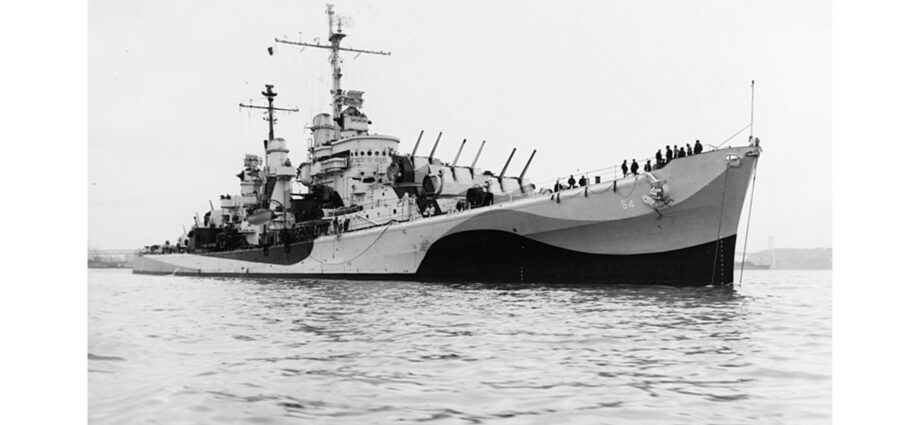World War II marked a turning point in naval warfare and saw the development of some of the most heavily armed warships in history, including the aircraft carrier. The United States Navy played a fundamental role in the Allied victory, especially in the Pacific Theater, with several classes of warships setting new standards for firepower.
The Washington Naval Treaty, signed in 1922, slowed down production of warships in the years following World War I. As a result, the United States had only about 700 commissioned ships when it entered the war, a figure that grew to more than 6,000 ships during WWII. And with technological advances in weaponry, the new classes of warships at the time were armed with bigger, better guns, and older vessels were upgraded to include new weaponry. (Also see, the most mass produced U.S. naval ships in WWII.)
To identify the most heavily-armed warship classes of the United States from World War II, 24/7 Wall St. referenced the World War II Database, an online collection of data regarding the people, events, equipment, and ships of WWII. We ranked aircraft carriers above other classes, according to their capacity for aircraft, while other vessel classes were ranked based on their largest caliber gun. We only included aircraft carriers, cruisers, and battleships in this list.
Some of the more heavily-armed ships in WWII were the Iowa-class battleships – the last battleships built for the Navy. Four of these biggest, most powerful battleships were built in the early 1940s, and are considered among the most heavily armed ships the U.S. ever put to sea. The main battery of 16-inch/.50 caliber Mark 7 guns could hit targets 23 miles away with armor-piercing rounds. The secondary battery consisted of much smaller caliber and shorter range, including anti-aircraft weaponry.
No matter how heavily armored cruisers and battleships were, they were eclipsed by the aircraft carrier. For example, the Essex-class aircraft carriers are considered one of the most successful aircraft carrier classes in naval history, with 24 built. While they did not possess the armament or firepower that a battleship or cruiser might have, their real firepower lay with their air wings. Capable of carrying up to 90 aircraft, each Essex-class carrier could project immense firepower across vast distances, utilizing fighter, bomber, and torpedo aircraft to engage enemy ships and installations. Their ability to project force and control vital areas of the Pacific theater was critical to the Allied victory. (These are the most highly decorated U.S. Navy ships of WWII.)
Noticeably, this list is somewhat segmented by the type of warships, with the cruisers occupying the lowest spots, followed by battleships, and then aircraft carriers. This speaks to the operational roles each type played during the war.
For example, cruisers tended to be used more as scouts, and filled a defensive role in protecting the convoys with smaller-caliber anti-aircraft weapons for close air support. Battleships had bigger guns and were generally used in an offensive role to sink enemy vessels and for shore bombardment and anti-aircraft defense. Aircraft carriers were the crown jewels of the fleet and allowed for aerial assaults beyond the horizon.
Click here to see the most heavily-armed American ships in WWII.
Click here to see our detailed methodology.
Sponsored: Find a Qualified Financial Advisor
Finding a qualified financial advisor doesn’t have to be hard. SmartAsset’s free tool matches you with up to 3 fiduciary financial advisors in your area in 5 minutes. Each advisor has been vetted by SmartAsset and is held to a fiduciary standard to act in your best interests. If you’re ready to be matched with local advisors that can help you achieve your financial goals, get started now.
Source: Read Full Article
-
Tom Brady, Giselle Bündchen, Larry David & Steph Curry Caught In FTX Crypto Fallout With Class Action Suit
-
Donald Trump Surrenders In Georgia And Is Booked On Charges Related To Efforts To Overturn 2020 Election Results — Update
-
Saudi Arabia To Open Airspace To Israeli Flights
-
Before and After Pictures of Devastating Wildfires Around the World
-
U.S. Stocks Climb Off Worst Levels But Remain Mostly Lower

